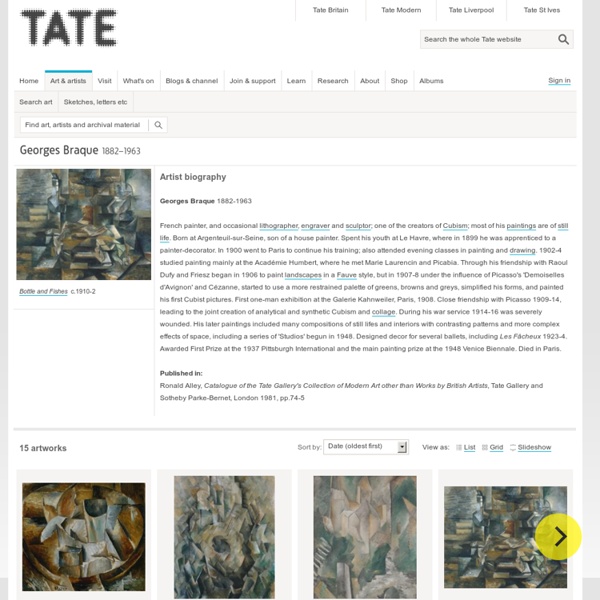



cubism: Analytic and Synthetic Cubism In the analytic phase (1907–12) the cubist palette was severely limited, largely to black, browns, grays, and off-whites. In addition, forms were rigidly geometric and compositions subtle and intricate. Cubist abstraction as represented by the analytic works of Pablo Picasso, Georges Braque, and Juan Gris intended an appeal to the intellect. The cubists sought to show everyday objects as the mind, not the eye, perceives them—from all sides at once. The trompe l'oeil element of collage was also sometimes used. During the later, synthetic phase of cubism (1913 through the 1920s), paintings were composed of fewer and simpler forms based to a lesser extent on natural objects. The Columbia Electronic Encyclopedia, 6th ed. More on cubism Analytic and Synthetic Cubism from Infoplease: cubism: Analytic and Synthetic Cubism - Analytic and Synthetic Cubism In the analytic phase (1907–12) the cubist palette was severely ... See more Encyclopedia articles on: European Art, 1600 to the Present
Georges Braque Biography Georges Braque was a 20th century French painter best known for inventing Cubism with Pablo Picasso. Synopsis Georges Braque was a 20th century French painter who invented Cubism with Pablo Picasso. Along with Cubism, Braque used the styles of Impressionism, Fauvism and collage, and even staged designs for the Ballet Russes. Through his career, his style changed to portray somber subjects during wartime and lighter, freer themes in between. He never strayed far from Cubism, as there were always aspects of it in his works. Early Life Georges Braque was a French painter born on May 13, 1882, in Argenteuil, France. Braque started his art career using an Impressionistic painting style. Career Success Braque's first solo show took place in 1908 at Daniel-Henry Kahnweiler's gallery. Braque's style changed after World War I, when his art became less structured and planned. The advent of World War II influenced Braque to paint more somber scenes. Personal Life
Exhibition | Kemper Art Museum Georges Braque and the Cubist Still Life, 1928–1945 offers the first detailed examination of Braque’s experiments with still lifes and interiors during the years leading up to and through World War II, an overlooked and transitional period in the career of this leading founder of Cubism. Braque employed the genre of the still life to conduct a lifelong investigation into the nature of perception through the tactile and transitory world of everyday objects. Attending to the cyclical nature of the artist’s work, the project examines the transformations in Braque’s creative process as he moved from painting small, intimate interiors in the late 1920s, to depicting bold, large-scale, tactile Cubist spaces in the 1930s, to creating personal renderings of daily life in the 1940s. The exhibition also considers his work in relation to contemporary aesthetic debates about politically engaged culture. Georges Braque and the Cubist Still Life, 1928–1945 is curated by Karen K. Exhibition support
Pablo Picasso. Les Demoiselles d'Avignon. Paris, June-July 1907 Publication Excerpt: The Museum of Modern Art, MoMA Highlights, New York: The Museum of Modern Art, revised 2004, originally published 1999, p. 64 Les Demoiselles d'Avignon is one of the most important works in the genesis of modern art. The painting depicts five naked prostitutes in a brothel; two of them push aside curtains around the space where the other women strike seductive and erotic poses—but their figures are composed of flat, splintered planes rather than rounded volumes, their eyes are lopsided or staring or asymmetrical, and the two women at the right have threatening masks for heads. The faces of the figures at the right are influenced by African masks, which Picasso assumed had functioned as magical protectors against dangerous spirits: this work, he said later, was his "first exorcism painting." <h3>Gallery Text:</h3> Les Demoiselles d’Avignon marks a radical break from traditional composition and perspective in painting. Audio Program excerpt MoMA Audio: Collection